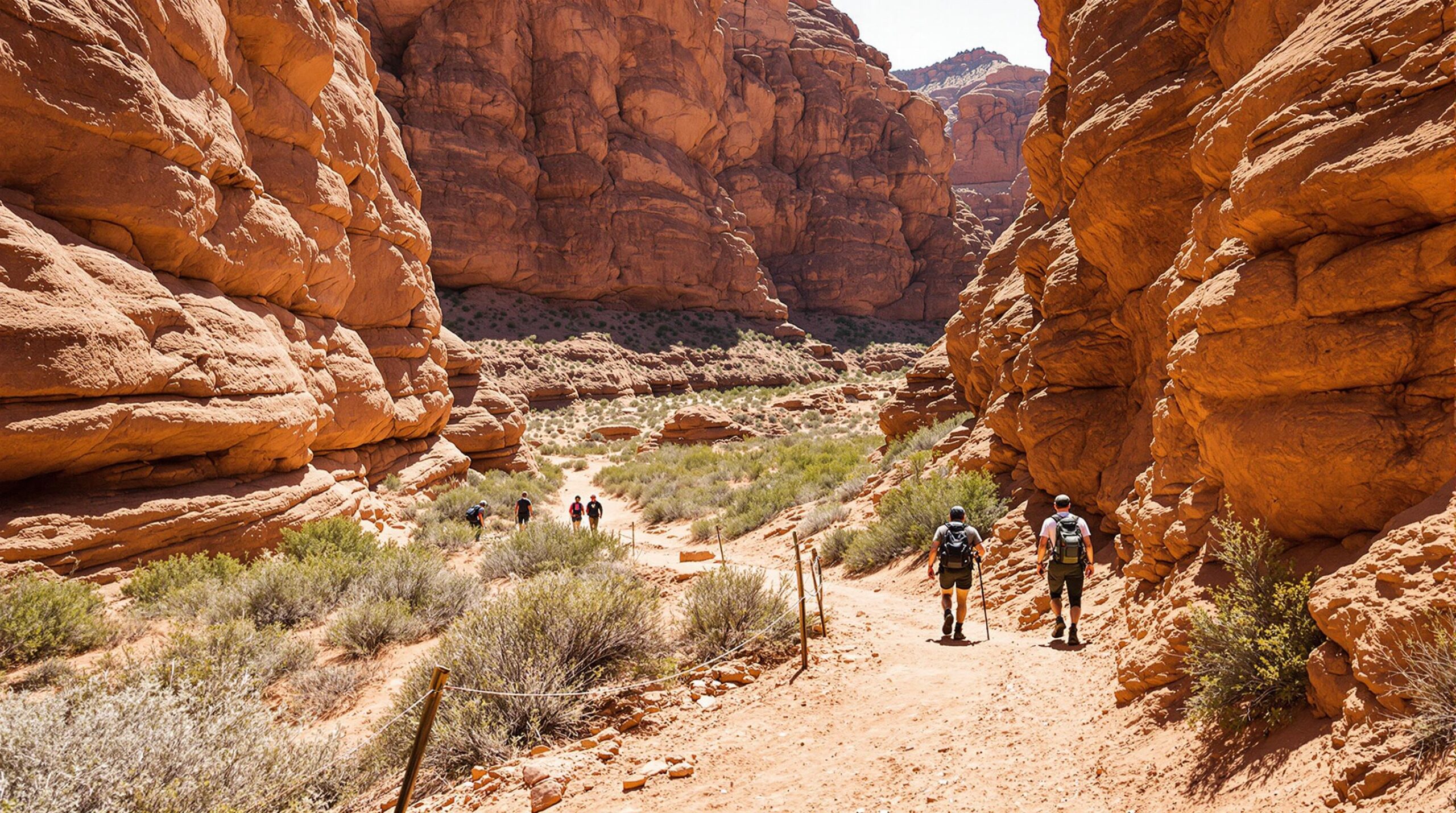Grand Canyon National Park is implementing a series of operational changes tied to the Transcanyon Waterline project. “The new water delivery system will meet water service needs at the South Rim and inner canyon for the next 50 plus years, while protecting natural and cultural resources, maintaining the visitor experience and reducing maintenance requirements,” one official release states. Officials have confirmed that Bright Angel Trail’s lower section will open May 15, offering hikers renewed passage from Havasupai Gardens down to Pipe Creek Beach.
Park guidelines note that several inner canyon routes, including the River Trail, Silver Bridge, and Plateau Point Trail, will remain off-limits until October, preventing direct access to Phantom Ranch from that corridor. Bright Angel Campground’s small group campsites become available May 15, while large group sites will not reopen until October 1. These arrangements coincide with efforts to replace deteriorating portions of the water system, which has experienced more than 85 breaks since 2010, and is slated for completion in 2026 a federal source indicates.
Meanwhile, those embarking on a rim-to-rim journey are advised to take the South Kaibab Trail, where there is no reliable water supply and terrain can be steeper. Park officials also caution that emergency rescues may be delayed due to high call volumes and staffing demands a separate brief mentions.
Stage 1 fire restrictions remain in force across the park. Campfires are allowed only in designated rings in designated areas above the rim, and these limits aim to reduce risks associated with hot and dry conditions in the canyon. Backpackers below the rim should rely exclusively on gas stoves to prepare meals, ensuring compliance with year-round fire regulations.
Many visitors shuttle between the South Rim and the inner canyon, so the requirement to use the Black Bridge for crossing the Colorado River has become a key detail. With parts of the River Trail and Silver Bridge off-limits, hikers must plan ahead for alternate routes and factor in any added distances or steep elevation changes.
Under these conditions, best practices in guest communication can make a substantial difference. Pre-visit notifications and on-site signage help travelers understand that closures are dynamic and may be extended or shortened if construction timetables shift. Text alerts or map-based apps can streamline the process, letting individuals and groups coordinate their itineraries efficiently.
Clear directional signs at popular junctions also help steer visitors who may be unfamiliar with unexpected reroutes. Training frontline staff to address detour-related questions quickly reduces confusion and keeps lines moving at check-in desks or trail information stations.
A recognized hospitality industry survey found that real-time alerts for closures and wayfinding systems increased guest satisfaction by over 20% during partial shutdowns. This insight supports the idea that timely communications can improve overall experiences when visitors encounter changing trail access.
Park operators and nearby campground managers stand to benefit from advocating water-saving habits during the multi-year overhaul. Simple measures, such as installing refill stations or encouraging visitors to carry reusable water containers, can ease the strain on supplies if portions of the new system come online in phases.
Additional conservation tactics might include identifying and reporting leaks, deploying drip irrigation, and adding backup reservoirs. Such strategies can minimize downtime when main pipes undergo ongoing installation or repairs along major trails within the canyon.
An official resource from the EPA indicates that installing drip irrigation and low-flow fixtures can reduce water consumption by as much as 40% in outdoor hospitality settings. These reductions can support broader sustainability goals and preserve critical resources where water supply may already be limited.
Many specialists emphasize that infrastructure improvements should be undertaken with minimal disruption to guests. Adopting eco-friendly materials and future-ready designs can help reduce maintenance requirements and accommodate the region’s growing demand for reliable water access.
The extended timeline underscores the scale of this undertaking. Planners anticipate the revamped waterline will serve the Grand Canyon’s needs for decades, but they also expect multiple phases of construction and changing trail conditions as work continues.
As Bright Angel Trail reopens in May and other routes remain closed until October, accurate updates and thorough planning remain essential for a safe and seamless canyon experience. Hikers, campers, and resort operators who stay alert to shifting conditions will be best positioned to adapt while major infrastructure improvements move forward.


